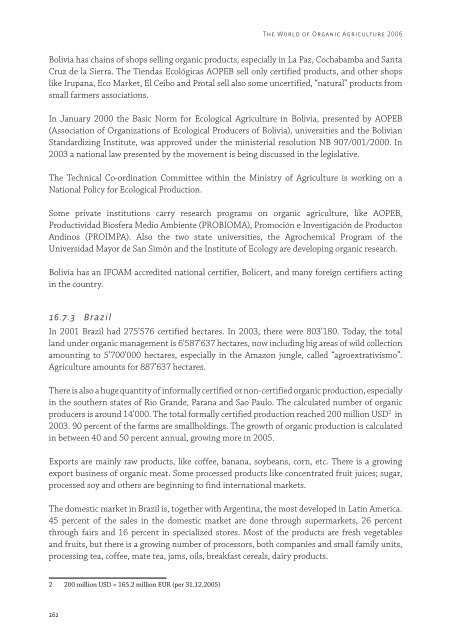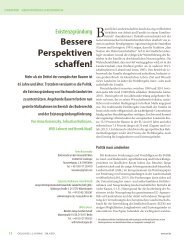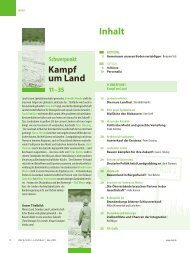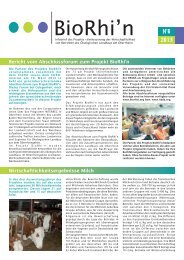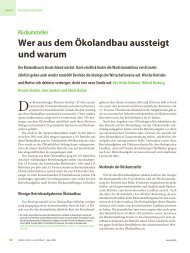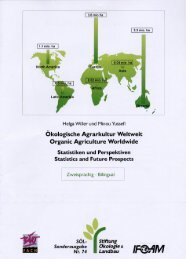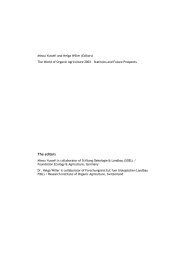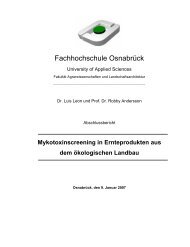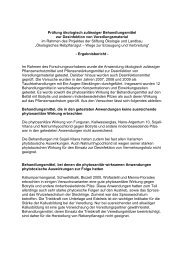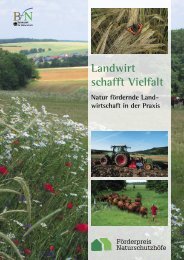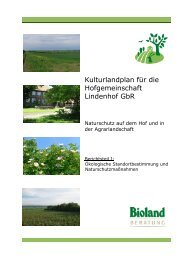the world of organic agriculture - Organic Eprints
the world of organic agriculture - Organic Eprints
the world of organic agriculture - Organic Eprints
Create successful ePaper yourself
Turn your PDF publications into a flip-book with our unique Google optimized e-Paper software.
162<br />
The World <strong>of</strong> <strong>Organic</strong> Agriculture 2006<br />
Bolivia has chains <strong>of</strong> shops selling <strong>organic</strong> products, especially in La Paz, Cochabamba and Santa<br />
Cruz de la Sierra. The Tiendas Ecológicas AOPEB sell only certified products, and o<strong>the</strong>r shops<br />
like Irupana, Eco Market, El Ceibo and Protal sell also some uncertified, “natural” products from<br />
small farmers associations.<br />
In January 2000 <strong>the</strong> Basic Norm for Ecological Agriculture in Bolivia, presented by AOPEB<br />
(Association <strong>of</strong> Organizations <strong>of</strong> Ecological Producers <strong>of</strong> Bolivia), universities and <strong>the</strong> Bolivian<br />
Standardizing Institute, was approved under <strong>the</strong> ministerial resolution NB 907/001/2000. In<br />
2003 a national law presented by <strong>the</strong> movement is being discussed in <strong>the</strong> legislative.<br />
The Technical Co-ordination Committee within <strong>the</strong> Ministry <strong>of</strong> Agriculture is working on a<br />
National Policy for Ecological Production.<br />
Some private institutions carry research programs on <strong>organic</strong> <strong>agriculture</strong>, like AOPEB,<br />
Productividad Biosfera Medio Ambiente (PROBIOMA), Promoción e Investigación de Productos<br />
Andinos (PROIMPA). Also <strong>the</strong> two state universities, <strong>the</strong> Agrochemical Program <strong>of</strong> <strong>the</strong><br />
Universidad Mayor de San Simón and <strong>the</strong> Institute <strong>of</strong> Ecology are developing <strong>organic</strong> research.<br />
Bolivia has an IFOAM accredited national certifier, Bolicert, and many foreign certifiers acting<br />
in <strong>the</strong> country.<br />
16.7.3 Brazil<br />
In 2001 Brazil had 275’576 certified hectares. In 2003, <strong>the</strong>re were 803’180. Today, <strong>the</strong> total<br />
land under <strong>organic</strong> management is 6’587’637 hectares, now including big areas <strong>of</strong> wild collection<br />
amounting to 5’700’000 hectares, especially in <strong>the</strong> Amazon jungle, called “agroextrativismo”.<br />
Agriculture amounts for 887’637 hectares.<br />
There is also a huge quantity <strong>of</strong> informally certified or non-certified <strong>organic</strong> production, especially<br />
in <strong>the</strong> sou<strong>the</strong>rn states <strong>of</strong> Rio Grande, Parana and Sao Paulo. The calculated number <strong>of</strong> <strong>organic</strong><br />
producers is around 14’000. The total formally certified production reached 200 million USD 2 in<br />
2003. 90 percent <strong>of</strong> <strong>the</strong> farms are smallholdings. The growth <strong>of</strong> <strong>organic</strong> production is calculated<br />
in between 40 and 50 percent annual, growing more in 2005.<br />
Exports are mainly raw products, like c<strong>of</strong>fee, banana, soybeans, corn, etc. There is a growing<br />
export business <strong>of</strong> <strong>organic</strong> meat. Some processed products like concentrated fruit juices; sugar,<br />
processed soy and o<strong>the</strong>rs are beginning to find international markets.<br />
The domestic market in Brazil is, toge<strong>the</strong>r with Argentina, <strong>the</strong> most developed in Latin America.<br />
45 percent <strong>of</strong> <strong>the</strong> sales in <strong>the</strong> domestic market are done through supermarkets, 26 percent<br />
through fairs and 16 percent in specialized stores. Most <strong>of</strong> <strong>the</strong> products are fresh vegetables<br />
and fruits, but <strong>the</strong>re is a growing number <strong>of</strong> processors, both companies and small family units,<br />
processing tea, c<strong>of</strong>fee, mate tea, jams, oils, breakfast cereals, dairy products.<br />
2 200 million USD = 165.2 million EUR (per 31.12.2005)


